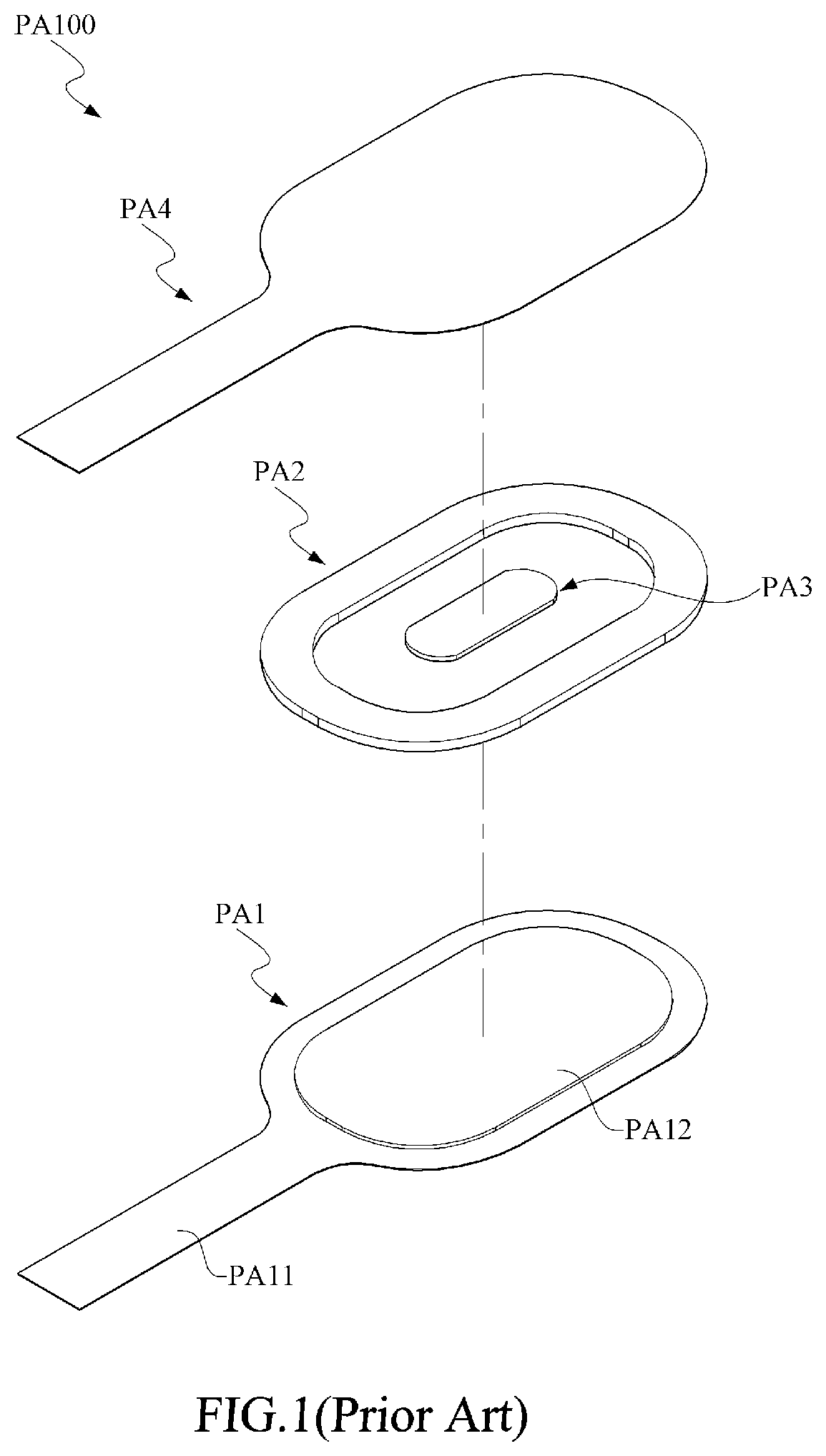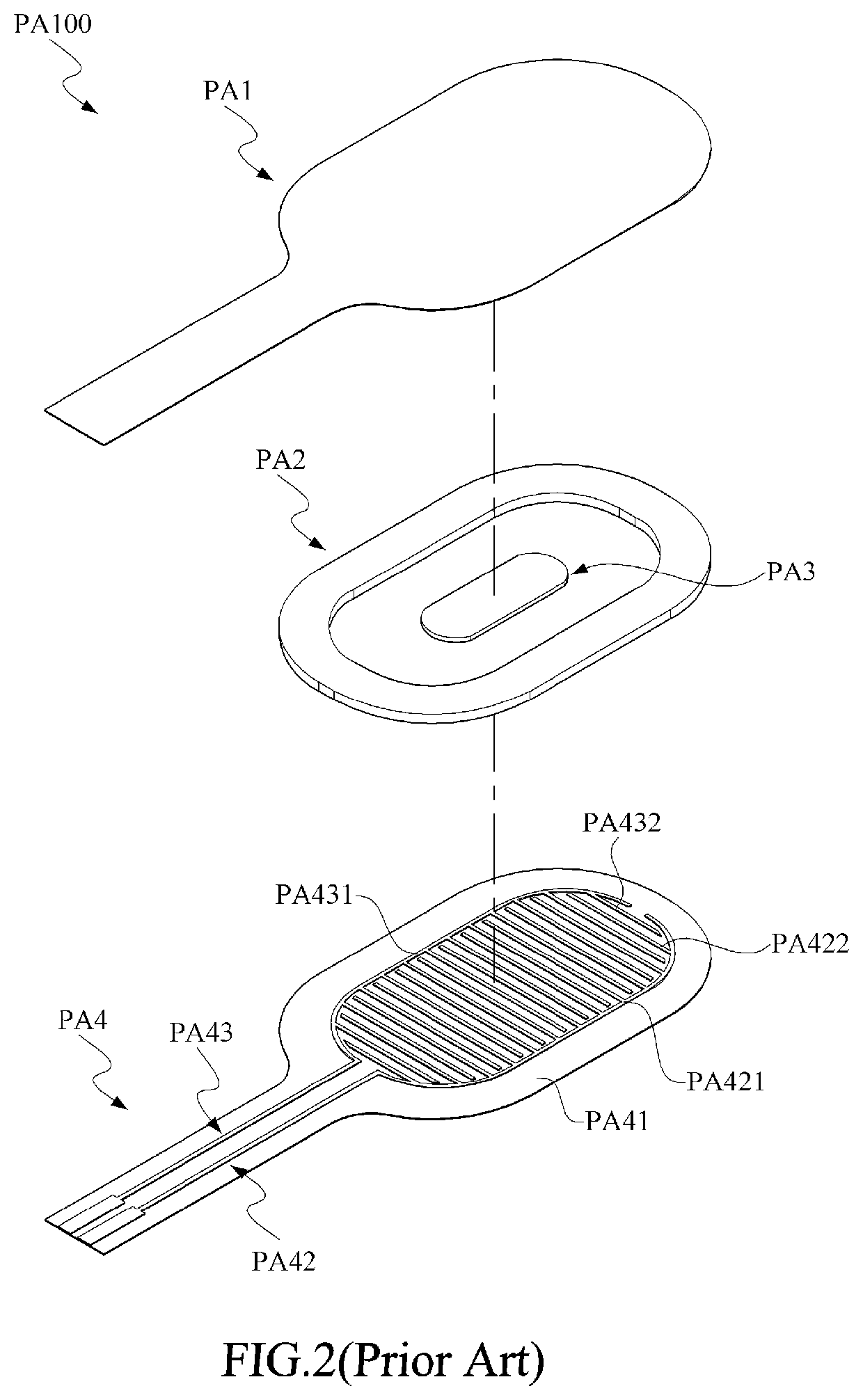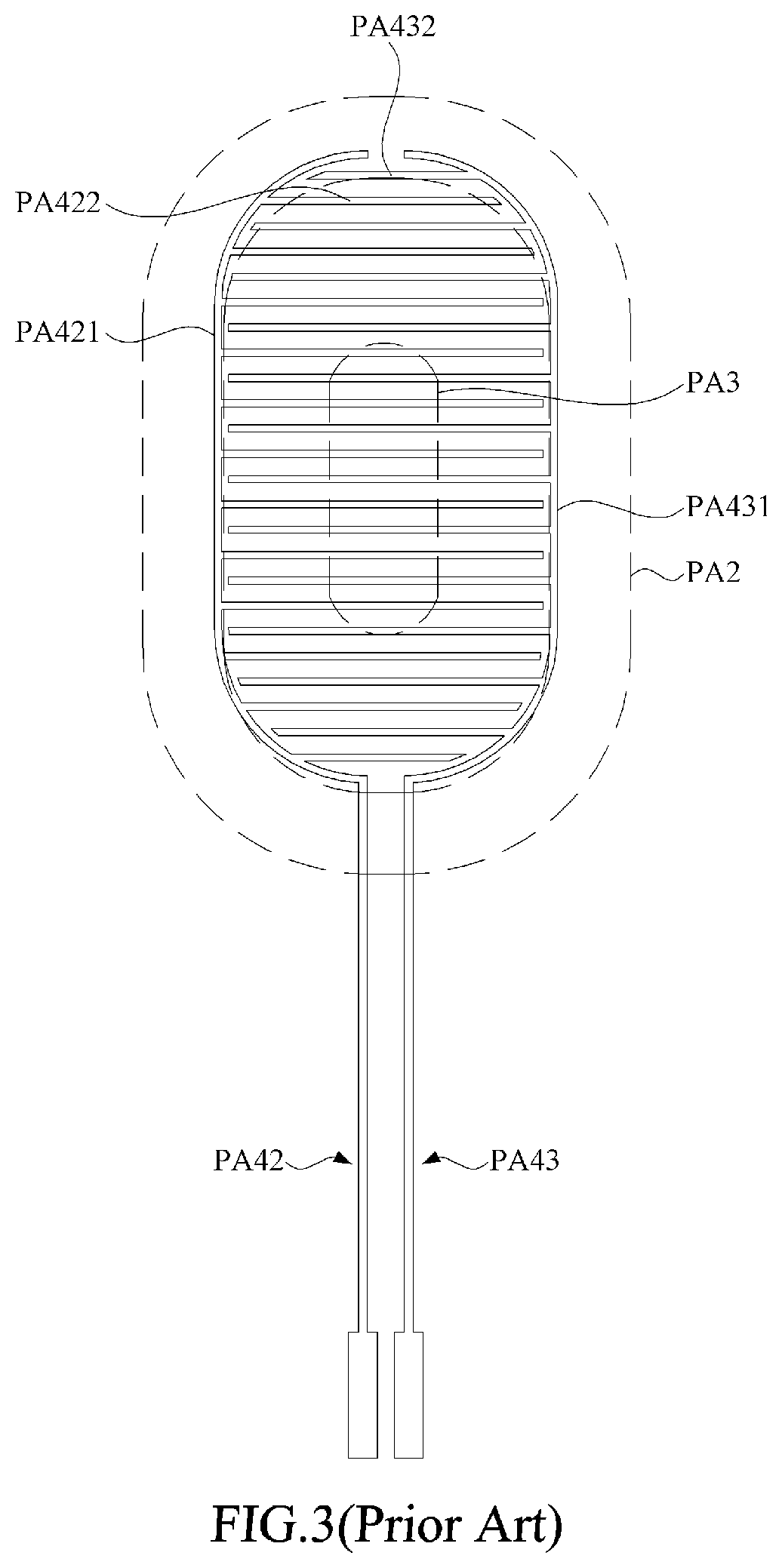Pressure sensor
- Summary
- Abstract
- Description
- Claims
- Application Information
AI Technical Summary
Benefits of technology
Problems solved by technology
Method used
Image
Examples
first embodiment
[0053]In practical applications, as the pressure sensor 100 of this first embodiment is introduced to perform testing under a pressure range from 2 bar to 6 bar, the corresponding variation percentage would be about 58.4% (computed by (Pressure detected at 2 bar−Pressure detected at 6 bar) / (Pressure detected at 2 bar)). For testing under the pressure within 4˜8 bar, the variation percentage would be about 36.5%.
[0054]Referring now to FIG. 7, relative position relationships between sensor circuits and spacers of a second embodiment of the pressure sensor in accordance with the present invention are demonstrated schematically and planarly. As shown, in this embodiment, an inner spacer 3a is used to replace the inner spacer 3 of the aforesaid first embodiment. Similar to the aforesaid inner spacer 3, this inner spacer 3a has a first-end portion 31a, a second-end portion 32a, a first lateral portion 33a and a second lateral portion 34a. The first-end portion 31a, the second-end portion ...
second embodiment
[0055]In practical applications, as the pressure sensor of this second embodiment is introduced to perform testing under a pressure range from 2 bar to 6 bar, the corresponding variation percentage would be about 53.5% (computed by (Pressure detected at 2 bar−Pressure detected at 6 bar) / (Pressure detected at 2 bar)). For testing under the pressure within 4˜8 bar, the variation percentage would be about 29.9%.
[0056]Referring now to FIG. 8, relative position relationships between sensor circuits and spacers of a third embodiment of the pressure sensor in accordance with the present invention are demonstrated schematically and planarly. As shown, in this embodiment, an inner spacer 3b is used to replace the inner spacer 3b of the aforesaid second embodiment. Similar to the aforesaid inner spacer 3a, this inner spacer 3b has a first-end portion 31b, a second-end portion 32b, a first lateral portion 33b and a second lateral portion 34b. The first-end portion 31b, the second-end portion 3...
third embodiment
[0057]In practical applications, as the pressure sensor of this third embodiment is introduced to perform testing under a pressure range from 2 bar to 6 bar, the corresponding variation percentage would be about 57% (computed by (Pressure detected at 2 bar−Pressure detected at 6 bar) / (Pressure detected at 2 bar)). For testing under the pressure within 4˜8 bar, the variation percentage would be about 32%.
[0058]Refer now to FIG. 9 to FIG. 11; where FIG. 9 is a schematic exploded view of a fourth embodiment of the pressure sensor invention accordance with the present invention, FIG. 10 is another view of FIG. 9, and FIG. 11 demonstrates schematically and planarly relative position relationships between the sensor circuits and the spacers of the fourth embodiment of the pressure sensor of FIG. 9.
[0059]As shown, in this embodiment, a pressure sensor 100c is largely resembled to the pressure sensor 100 of the first embodiment, and the major difference in between is that, in the pressure s...
PUM
 Login to view more
Login to view more Abstract
Description
Claims
Application Information
 Login to view more
Login to view more - R&D Engineer
- R&D Manager
- IP Professional
- Industry Leading Data Capabilities
- Powerful AI technology
- Patent DNA Extraction
Browse by: Latest US Patents, China's latest patents, Technical Efficacy Thesaurus, Application Domain, Technology Topic.
© 2024 PatSnap. All rights reserved.Legal|Privacy policy|Modern Slavery Act Transparency Statement|Sitemap



